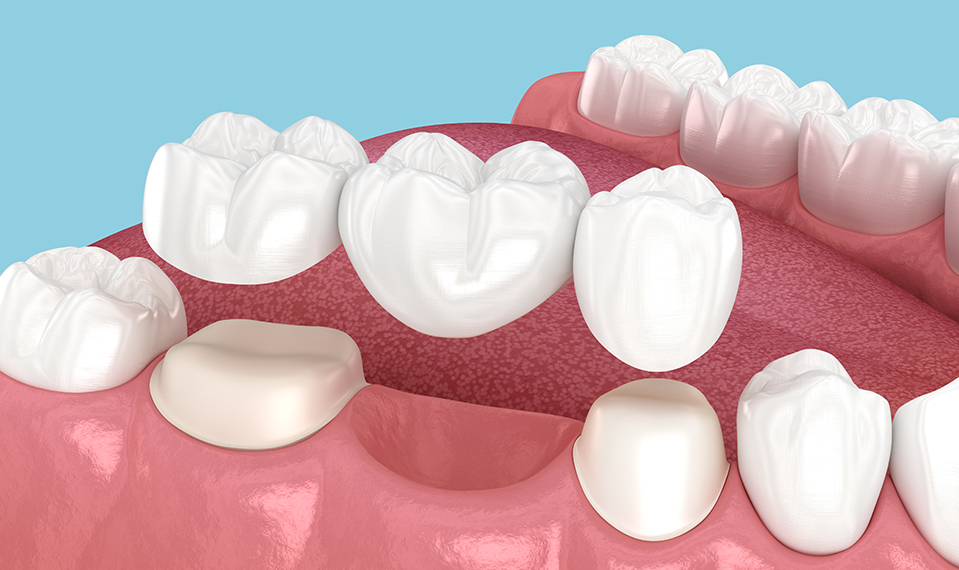Dental Bridges In Gainesville, FL
Looking for a solution to missing teeth? A custom dental bridge is an easy and effective way to fill gaps, restore proper oral function, and improve your smile. At Van Dyke General and Implant Dentistry, we offer custom-made bridges designed to securely fit each patient. Contact us today to schedule a consultation with one of our experienced dentists!

What Are Dental Bridges?
A dental bridge is a durable, natural-looking solution for replacing missing teeth. They consist of a false tooth supported by crowns on either side of the missing tooth. These crowns are securely cemented to ensure the bridge stays in place, providing both stability and comfort. A well-fitted dental bridge not only fills gaps but also helps stabilize the surrounding teeth, preventing them from shifting or becoming misaligned. This helps strengthen your bite and preserve your overall dental health. If you have missing teeth, a dental bridge can offer long-lasting results that restore both the function and appearance of your smile!

Types Of Dental Bridges
Bridges are commonly made from materials such as porcelain, ceramics, gold, metals, or a combination of these, and are chosen based on their aesthetic and functional demand. During a consultation, our dentists can help determine which bridge may be best for your needs.
Traditional Fixed Bridge
A traditional fixed bridge is the most common type of dental bridge. These feature two or more crowns with a filler tooth or teeth that are all connected to one another. The crowns keep the bridge in place. These bridges can be made from metal, porcelain-fused-to-metal, or ceramic material.
Cantilever Bridge
With a cantilever bridge, the false tooth or teeth connect to only one anchoring tooth. This may be an option for people who have healthy teeth located on only one side of the missing tooth gap.
Resin-Bonded Bridge
Also referred to as a Maryland dental bridge, a resin-bonded bridge may be used for patients who have missing front teeth. This type of bridge is made of porcelain fused to metal or ceramic teeth that are supported by a framework.
Implant-Supported Bridge
An implant-supported bridge is similar to a traditional fixed bridge. However, instead of being cemented to the surrounding teeth (as with a traditional fixed bridge), the bridge is held in place by dental implants.
Dental Bridge Procedure
The dental bridge process typically involves two appointments. During the first visit, our dentists prepare the teeth on either side of the gap, reshaping them to hold the bridge securely. After that, an impression or digital scan of your mouth will be taken so that we can create a well-fitted bridge. At this time, a temporary bridge may be placed while the permanent bridge is being made.
During the second visit, the temporary bridge will be removed, and the custom-made bridge will be fitted. Before permanently cementing the bridge, our team will ensure it fits comfortably and make any necessary adjustments. Once everything is secure and comfortable, our dentist will permanently cement the bridge in place, restoring both function and aesthetics.
Benefits Of Dental Bridges
Dental bridges can offer several benefits to patients seeking to restore their smile. Some major advantages of dental bridges include the following.
- Help facilitate a proper bite
- Prevent remaining teeth from moving out of place
- Restore your ability to chew, speak, and perform other tasks
- Restore the appearance of your smile
- Help foster a greater sense of self-confidence and esteem
- Improve your overall oral health and well-being
